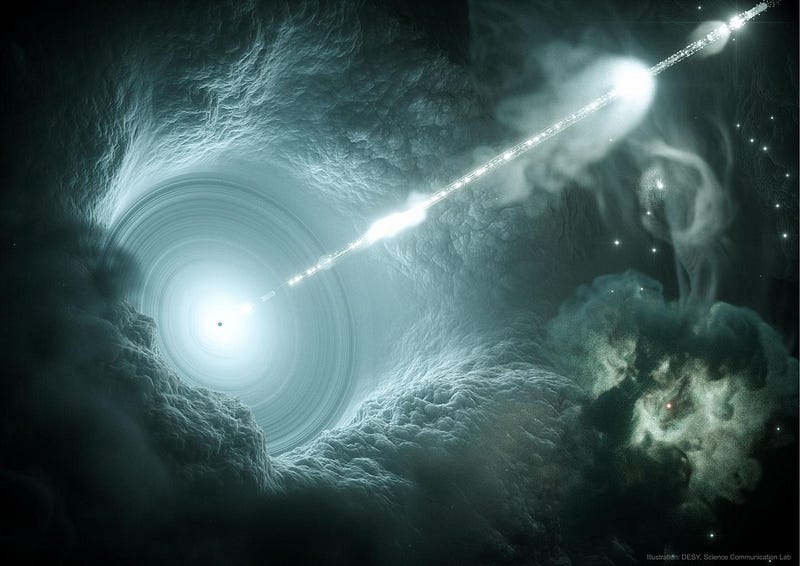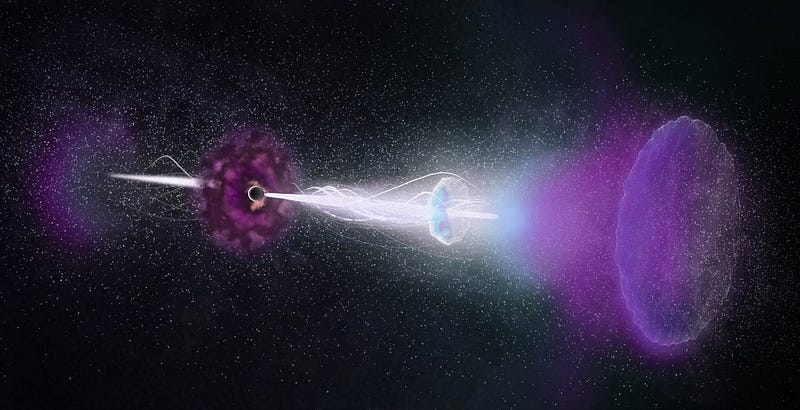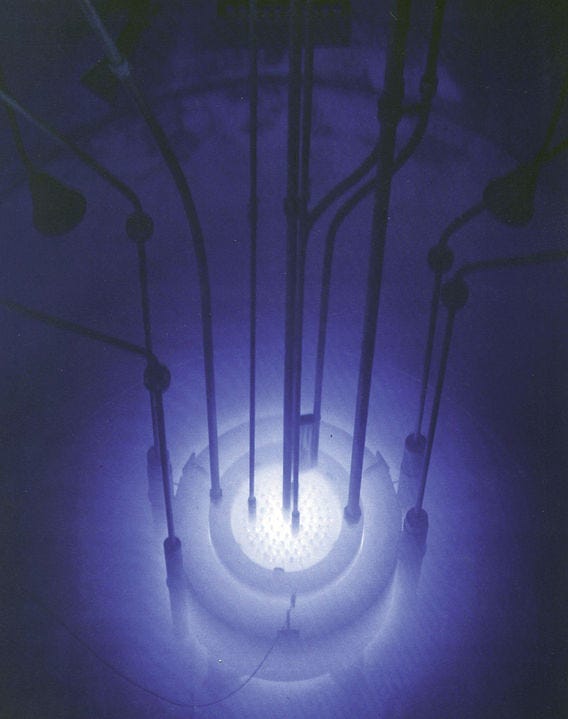Faster-than-Light Jets from Gamma Ray Bursts Explained
Written on
Chapter 1: Understanding Gamma Ray Bursts
Gamma ray bursts (GRBs) represent some of the most intense explosions observed since the beginning of the universe. Recent findings indicate that jets produced by these bursts might exceed the speed of light within their surrounding gas clouds. This intriguing concept does not contravene the ultimate speed limit set by the universe.
Albert Einstein famously established that no object can surpass the speed of light in a vacuum. However, jets generated during these cosmic events could exceed the local speed of light due to the reduced speed of light in various media, such as gas clouds. The exact speed of light in these clouds is variable and contingent on the dynamics of the blast wave as it moves through.

This artistic rendering illustrates a jet erupting from a black hole at the core of a blazar, a highly active galaxy that shoots out matter at nearly light speed towards Earth. Credit: DESY, Science Communication Lab (used with permission by Astronomy Picture of the Day, co-managed by Robert Nemiroff at Michigan Tech).
Chapter 2: The Origins of Gamma Ray Bursts
Gamma ray bursts are fleeting phenomena characterized by intense gamma radiation, the highest-energy form of electromagnetic radiation. These events can last from mere milliseconds to several minutes, unleashing energy equivalent to a million trillion times that of our Sun. GRBs are significantly more powerful than typical supernovae and can lead to the formation of new black holes.
"Gamma-ray bursts can occur during the violent demise of stars. These are among the most potent explosions we observe in the cosmos, often linked to specific supernova types. Since gamma rays can penetrate nearly everything, GRBs are detectable farther away in the universe than other explosion types," explains Dr. Robert Nemiroff from Michigan Technological University.
The initial discovery of GRBs took place in the 1960s when U.S. military satellites were on the lookout for gamma rays generated by nuclear tests.
Section 2.1: Classifying Gamma Ray Bursts
There are two primary categories of GRBs: long-duration and short-duration. Long-duration bursts, which last from two seconds to several minutes, are generally associated with the catastrophic deaths of massive stars as supernovae, although not every stellar death results in a GRB.
"Short-duration bursts last less than two seconds, ranging from a few milliseconds to two seconds, with an average duration of approximately 0.3 seconds. These bursts are typically linked to the merging of neutron stars into a new black hole or a neutron star merging with a black hole to form a larger one," NASA states.

This artistic interpretation depicts GRB jets interacting with surrounding material in a process called reverse shock. Credit: NRAO/AUI/NSF, S. Dagnello.
Chapter 3: Mechanisms Behind GRBs
These high-energy occurrences can result from various interactions involving massive celestial bodies, such as dense remnants of stars.
"Gamma-ray bursts can also arise when neutron stars in binary systems collide. Our model encompasses both merging neutron stars and directed supernovae," states Jon Hakkila from The College of Charleston, the lead author of the study detailing these findings.
An intriguing subset of these events is dark gamma ray bursts, which emit gamma and X-rays yet remain nearly undetectable in visible light.

Dense clouds of dust obscure visible light from a dark GRB, while X-rays and gamma rays penetrate through. Credit: NASA/Swift/Aurore Simonnet.
Section 3.1: The Role of Radiation
As the expanding jet from a GRB moves through a gas cloud at superluminal speeds, it releases radiation.
"The interaction of the impactor wave with the surrounding medium generates Cerenkov and/or other collisional radiation when traveling faster than the local speed of light," the researchers detail in The Astrophysical Journal. Prior to this study, the contribution of Cerenkov radiation to gamma ray bursts was not well understood.

An image depicting Cerenkov radiation observed at the Reed Research Reactor in Oregon, USA. Public domain image.
Chapter 4: Time-Reversible Light Curves
The phenomenon of superluminal jets can create what are known as time-reversible light curves, where the sequence of events appears inverted from their actual occurrence.
To visualize this, picture standing by a pond while someone across skips a stone toward you. Each time the stone strikes the water, ripples form, traveling outward. Despite the stone moving through the air faster than the ripples, you would observe the last wave hit your shore before the first ripple created by the stone's initial contact.
Such structures surrounding GRBs exhibit similar superluminal characteristics.
"Traditional models of gamma ray bursts have overlooked the properties of time-reversible light curves. Superluminal jet motion accounts for these properties while preserving many standard model features," explains Jon Hakkila.
Insights gained from this research could enhance the understanding of all gamma ray burst classes, paving the way for future discoveries.
Did you find this article informative? Sign up for The Cosmic Companion Newsletter!
This video explores gamma ray bursts and their incredible energy output.
In this video, experts discuss the rapid phenomena of gamma ray bursts.